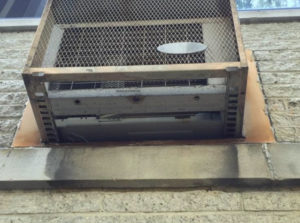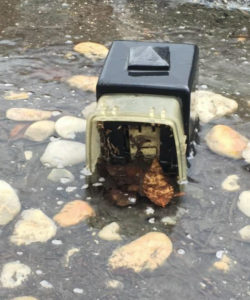By Todd El-Taher
Originally Published in Quorum magazine May 2018
If fate were a just maiden we would be the sole beneficiaries of every lapse in judgment, mistake, goof and act of ignorance we ever committed either by commission or omission. Moreover, if we decide to be honest with ourselves, as a collective, both on the management and service provider side, we work in an industry that in part inherited, and possesses within its own right, its own fair share of incompetence. There’s so much of it that we have forensic engineers to provide a determination of cause and remedy as well as financial products like developer surety bonds to guard against warranty claims. Last year CAI National released a report highlighting the frequency of defects and their respective causes. The truth is that we, as leaders in our industry, have an ethical responsibility to be good stewards of the properties we manage and work on, which is a cause that we are often times accused of shirking. Sometimes we’re squarely to blame, other times it’s not our fault at all. While names and locations are changed to protect the innocent, these are their stories:
Cognitive dissonance

We are a culture that brags how much we bought our home for but then pride ourselves on the ability to get something done cheaply on it. Meet the Johnson’s. They bought a penthouse condo in Arlington with amazing panoramic views. They wanted to remodel their unit and enclose a roof drain pipe in a bulkhead next to their kitchen. Rather than hiring an architect and a professional contractor, the Johnson’s opted for that low-bid, unqualified, unlicensed kind of guy to work on their dream home. Their contractor tied framing to the roof drain, using electrical wiring, suspending the weight of the ceiling to the drainpipe itself. That roof drain services 4000SF of roof. What could go wrong?
The laws of unintended consequences

Sometimes the problems aren’t unique to a specific unit, but rather indicative of a systemic failure. I cannot blame a single family on this, as the problem is pervasive in the building and the condominium built in 1965 didn’t have written into the by-laws a preventative mechanism for what wasn’t understood to be a problem, just yet. Sleeve unit air conditioners were a popular mechanism for providing comfort without obstructing the view from a window. They have a metal chassis that fits through the wall that provides support for the internal components which slide right inside of it and each one is unique unto itself. Just like most things over time, the size changes so when the original air conditioning unit fails it’s likely obsolete, inefficient or more expensive to repair rather than replace. Meet A/C Turducken; the mechanical equivalent of Russian nesting dolls. A/C Turducken takes place when you have successive replacements units and stick an LG inside a Kenmore inside a Carrier. What’s wrong with that you ask? Great question! The condensation drains in successive units have no guarantee of draining in the correct place as the drains themselves may be obstructed by the chassis of an obsolete unit as can be seen here. Now you have the condensation dripping down the face as seen in the photo and within the building itself. Got mold?
Measure once, cut again

We all love outdoor lighting but it’s not worth dying over. One of the key benefits of hiring a design professional is letting them assume liability. If you hang the outcome on a design professional’s neck it is their sole responsibility for function, form and regulatory compliance. In every circumstance, the design fees associated with a project are always less money than the liability of personal injury. Often times we’re pressured by homeowners, board members, supervisors and managers to get things done as cheaply as possible. Injury for negligence is expensive and bad work that has to be redone is more expensive in the long run. Let’s agree, as a community, to not skip the necessary first step of consulting with a professional up front so we can ensure the results of the outcome.

